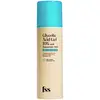What's inside
What's inside
 Key Ingredients
Key Ingredients

 Benefits
Benefits

 Concerns
Concerns

 Ingredients Side-by-side
Ingredients Side-by-side

Water
Skin ConditioningPropylene Glycol
HumectantGlycolic Acid
BufferingNiacinamide
SmoothingGlycerin
HumectantGluconolactone
Skin ConditioningTranexamic Acid
AstringentSalicylic Acid
MaskingXanthan Gum
EmulsifyingMorus Alba Fruit Extract
AntioxidantDaucus Carota Sativa Root Extract
Skin ConditioningButylene Glycol
HumectantSodium Hydroxymethylglycinate
PreservativeAloe Barbadensis Leaf Extract
EmollientGlycyrrhiza Uralensis Root Extract
Skin ConditioningTetrasodium EDTA
1,2-Hexanediol
Skin ConditioningWater, Propylene Glycol, Glycolic Acid, Niacinamide, Glycerin, Gluconolactone, Tranexamic Acid, Salicylic Acid, Xanthan Gum, Morus Alba Fruit Extract, Daucus Carota Sativa Root Extract, Butylene Glycol, Sodium Hydroxymethylglycinate, Aloe Barbadensis Leaf Extract, Glycyrrhiza Uralensis Root Extract, Tetrasodium EDTA, 1,2-Hexanediol
Water
Skin ConditioningGlycolic Acid
BufferingPropylene Glycol
HumectantGlycerin
HumectantTranexamic Acid
AstringentBiosaccharide Gum-1
HumectantPolyacrylate Crosspolymer-11
Emulsion StabilisingPhenoxyethanol
PreservativeSaccharide Isomerate
HumectantHydroxyethylcellulose
Emulsion StabilisingAllantoin
Skin ConditioningBis-PEG-18 Methyl Ether Dimethyl Silane
EmollientPanthenol
Skin ConditioningTriethylene Glycol
MaskingSodium Hyaluronate
HumectantCitric Acid
BufferingSodium Citrate
BufferingWater, Glycolic Acid, Propylene Glycol, Glycerin, Tranexamic Acid, Biosaccharide Gum-1, Polyacrylate Crosspolymer-11, Phenoxyethanol, Saccharide Isomerate, Hydroxyethylcellulose, Allantoin, Bis-PEG-18 Methyl Ether Dimethyl Silane, Panthenol, Triethylene Glycol, Sodium Hyaluronate, Citric Acid, Sodium Citrate
 Reviews
Reviews

Ingredients Explained
These ingredients are found in both products.
Ingredients higher up in an ingredient list are typically present in a larger amount.
Glycerin is already naturally found in your skin. It helps moisturize and protect your skin.
A study from 2016 found glycerin to be more effective as a humectant than AHAs and hyaluronic acid.
As a humectant, it helps the skin stay hydrated by pulling moisture to your skin. The low molecular weight of glycerin allows it to pull moisture into the deeper layers of your skin.
Hydrated skin improves your skin barrier; Your skin barrier helps protect against irritants and bacteria.
Glycerin has also been found to have antimicrobial and antiviral properties. Due to these properties, glycerin is often used in wound and burn treatments.
In cosmetics, glycerin is usually derived from plants such as soybean or palm. However, it can also be sourced from animals, such as tallow or animal fat.
This ingredient is organic, colorless, odorless, and non-toxic.
Glycerin is the name for this ingredient in American English. British English uses Glycerol/Glycerine.
Learn more about GlycerinGlycolic Acid is arguably the most famous alpha hydroxy acid (AHA) with tons of research backing its benefits.
It is found naturally in sugar cane but the form used in skincare is usually synthetic for purity and stability.
Glycolic acid removes the top layer of dead skin cells to allow newer and fresher ones to emerge.
AHAs work by breaking down the structural “glue” that holds old skin cells in place. When that buildup is gone, your skin can renew itself more efficiently.
Research also shows glycolic acid stimulates collagen production, helping to firm and thicken the skin over time. This is one of its biggest advantages over other AHAs.
Overall, glycolic acid helps with:
Fun fact: Glycolic acid boosts skin hydration by helping it produce molecules that increase hyaluronic acid naturally.
To work best, glycolic acid products should have a pH between 3-4 (that’s where exfoliation is most effective but still gentle on skin).
The pH and concentration of a product are key to its effectiveness:
It is normal to feel a slight stinging sensation when using glycolic acid. This usually fades as your skin adjusts.
Because glycolic acid has the smallest molecular size in the AHA family, it can penetrate deeper, which enhances its effectiveness but also makes it more likely to irritate sensitive skin.
If your skin is very sensitive or prone to rosacea, glycolic acid may be too strong; in that case, try milder options like lactic acid or a PHA instead.
Recent studies suggest glycolic acid might even help protect against UV damage. But don’t skip sunscreen! Freshly exfoliated skin is more sensitive to the sun.
Glycolic acid is a skincare superstar. It smooths, brightens, hydrates, and firms the skin. Unless you’re highly sensitive, it’s well worth adding to your routine.
Read more about some other popular AHA's here:
Learn more about Glycolic AcidPropylene Glycol is an odorless, colorless liquid. As a humectant, it helps skin retain moisture. It also aids in delivering active ingredients.
Another role of this ingredient is preventing a product from melting or freezing. Propylene glycol also adds antimicrobrial properties to a product, elongating product lifespan.
This ingredient is considered an organic alcohol and commonly added into both cosmetics and foods.
Those with sensitive skin or conditions may develop a rash when using this ingredient.
Learn more about Propylene GlycolTranexamic Acid is best used for treating hyperpigmentation, discoloration, and melasma. It can also help build a stronger skin barrier.
Once applied, Tranexamic Acid starts decreasing inflammation from UV exposure. Tranexamic Acid also prevents our skin cells from meeting the pigment production cells.
Its brightening property makes it great at reducing the appearance of acne scars and marks.
Fun fact: Tranexamic Acid is also a medication used to reduce heavy bleeding.
This acid is derived from lysine, an amino acid.
Learn more about Tranexamic AcidWater. It's the most common cosmetic ingredient of all. You'll usually see it at the top of ingredient lists, meaning that it makes up the largest part of the product.
So why is it so popular? Water most often acts as a solvent - this means that it helps dissolve other ingredients into the formulation.
You'll also recognize water as that liquid we all need to stay alive. If you see this, drink a glass of water. Stay hydrated!
Learn more about Water